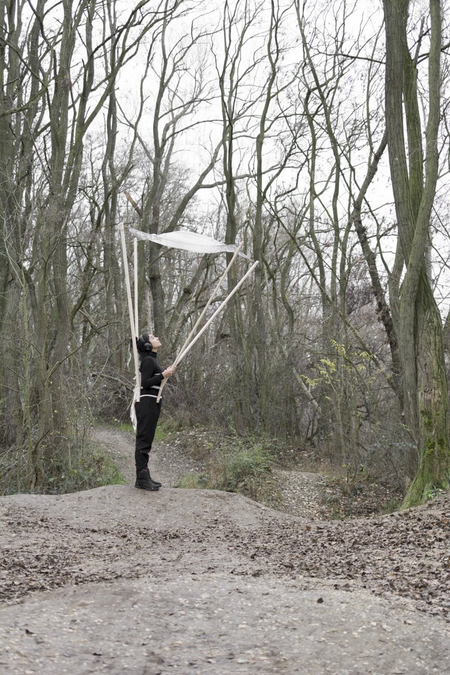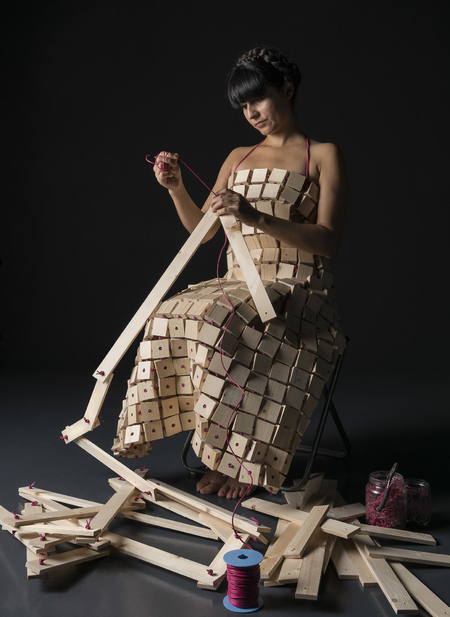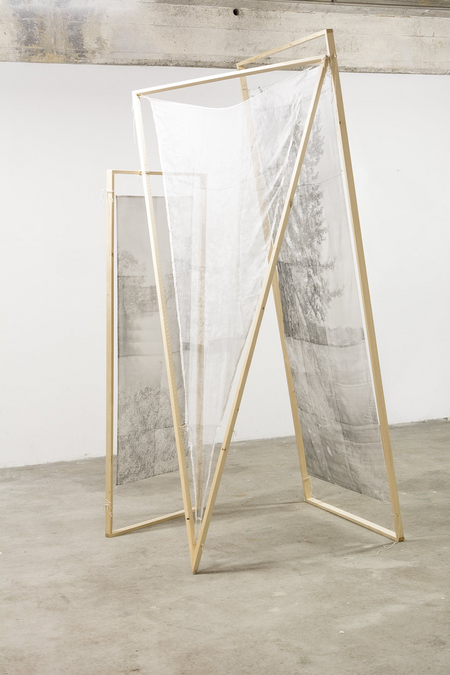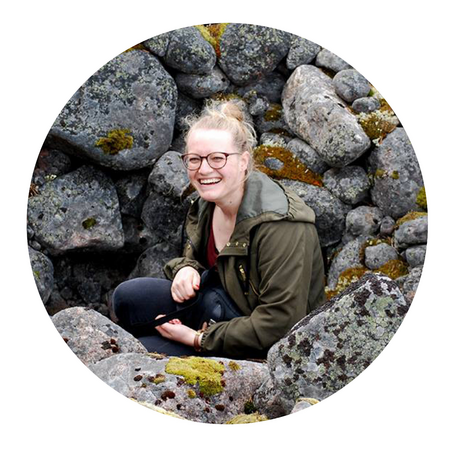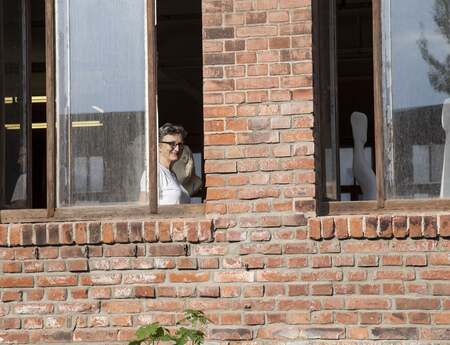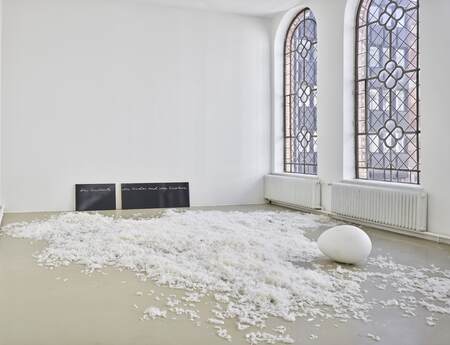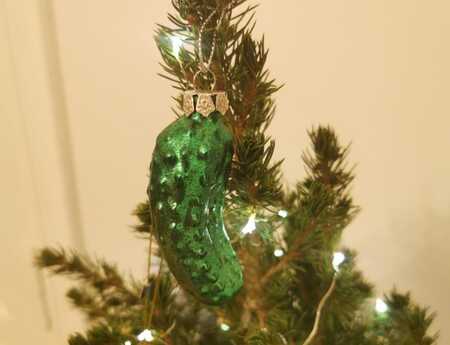Tamara Jacquin – Art as a Form of Elaboration and a Form of Liberation
In the context of the Spanish art fair for tree-dimensional art SCULTO, the sculpture network award was given to the young and talented artist Tamara Jacquin. In an interview we invite you to learn more about Tamara Jacquin and her versatile works.
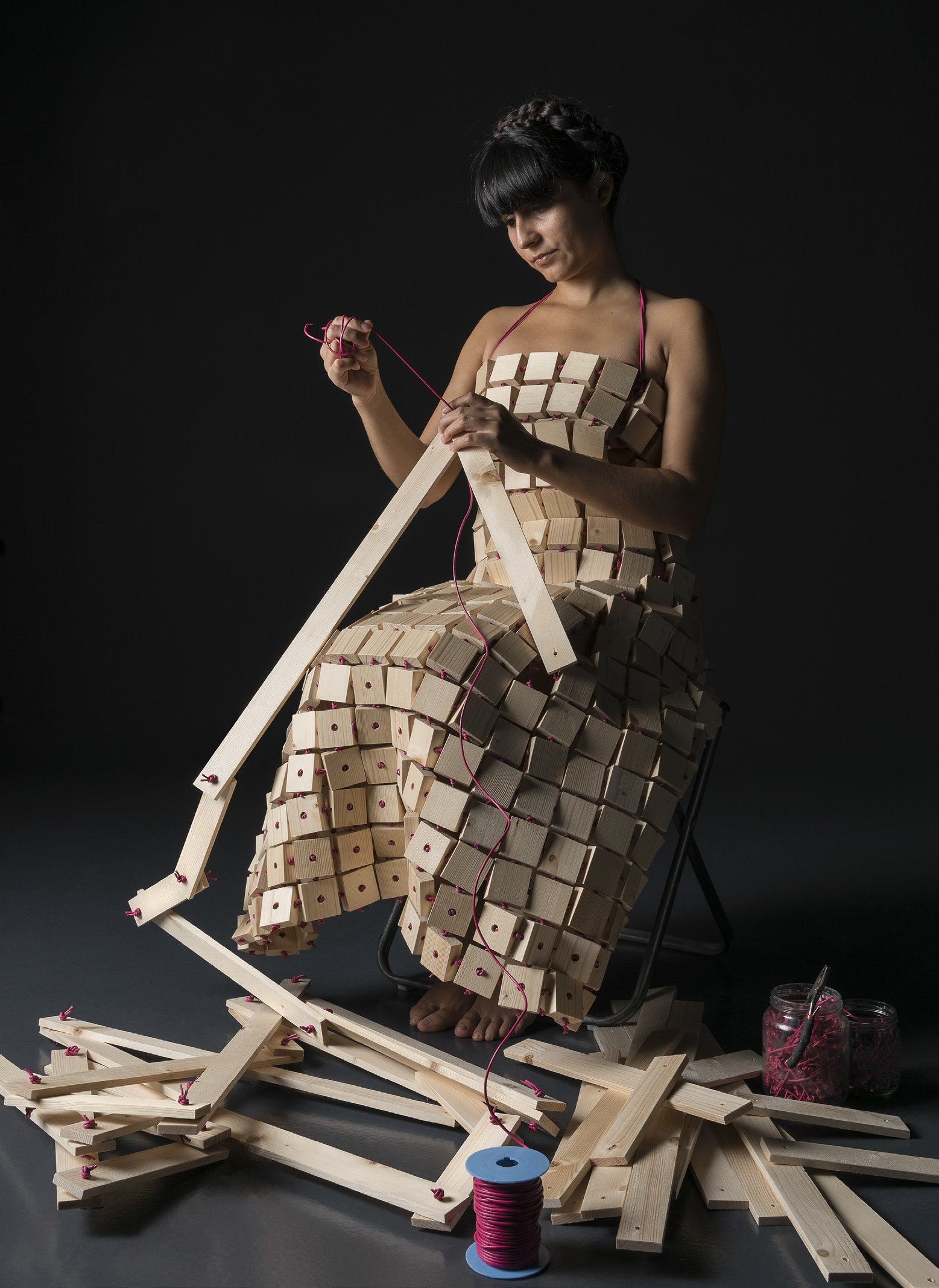
Tamara Jacquin grew up in a small town in Chile and has always enjoyed creative processes and working with her hands. Right at the beginning of her studies of architecture, she realized that she wanted to be an artist, not an architect. The encounter with works of Rebecca Horn as well as her one-year exchange in France deepened that decision. After she earned her bachelor’s degree, she decided to try her luck in Europe and develop a personal artistic expression. Now she holds two master’s degrees, one in Artistic Production and the other in Art Research and Creation.
Her works are closely linked to her own body and personal experiences. With a huge talent for crafts, she constructs aesthetic works that carry you away. The combination of physical objects and performance create impressive effects. Through her ability to reveal and address human issues in a deeply personal way, her works are easy to relate to and can evoke an emotional response.
Tamara Jacquin is represented by the Galery EST ART SPACE in Madrid.
How did your studies in architecture shape you and how does this continue to influence your artworks?
Well, it definitely shaped me. I think of everything in terms of structure and space. I just love building things. The construction part! And I love objects, three-dimensional things. I guess this came from architecture. Even if I work with something two-dimensional like an image, I try to find a way for it to become an object. I believe that the approach to a three-dimensional and to a two-dimensional image is different. So for me, it is really important how the artwork goes into the space and how the viewer approaches it. It is a game. For me, thinking about how people interact with the artwork is the same thing as in architecture school when we thought about how people would inhabit the space while we were shaping it.
What does art mean for you personally?
Art is, perhaps, a reflection. The reflection of the “soul” of a society. It shows us in a poetic and aesthetic language, how we are, what we think, what concerns us, what we believe or what matters at this moment. That is why it is so specific in time and changes as humanity evolves or rather transforms. So for me, art must always be loaded with substance and must connect with people. It does not matter if it connects from the intellect or from the affection. Sometimes a little recognition is all that is needed. A clash with a reality you may not have seen yet or a way of articulating thought from a unique perspective that can only be achieved through art. Therefore, art is also a form of knowledge. For me, personally as an artist, it is also a way to channel everything that is choking me. To take those whispers out of my body who torment me. It is both a form of elaboration and a form of liberation.
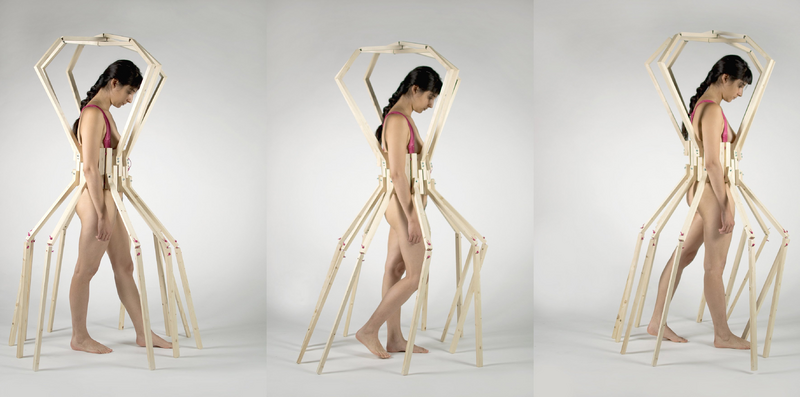
How do you start your creative process?
It is hard to say. I consider the creative process as constantly active, because one idea always links to another and another and another. I do not think you just come up with one idea, finish it and then look for another. The creative process is always ongoing, it accumulates. In fact, I have notebooks full of ideas. I always write them down, because I can never develop them all at once. Some are forgotten, others are on the waiting list. Some are achievable, others are not. For me, the creative process begins with the idea. If you do not run out of them, the process never ends. When I want to develop a new project and I am blank, that is because I have forgotten them. I have a very bad memory, that is why I write my ideas down. I read them again and choose one. Then the process continues.
On your website, you state that nothing is more real than the body and your own body is shown in many of your artworks, often put into extreme situations (naked in the cold, barefoot on snow, waxing pubic hair). Can you explain more about this? And do you consider the human body to be art?
I consider that all the external experiences and the subject have to go through the body. The body is the great receiver, the one that absorbs everything, and therefore it is the container of those experiences. It also has an accumulation of internal experiences that are affected by the external ones and vice versa, so that both feed on each other. All this is manifested in the human body. Our body as a physical object is the first filter of reality that happens outside and also our last protective layer of what happens on the inside. I do not consider the human body to be art, but it can be used as a tool to make art.
Sometimes in my work, when I use my body and take it to extreme conditions, I do it as a way of exposing it as it is, fragile and sensitive. I like to see how the world affects it—the environment, the wind, the snow. Everything affects the body but at the same time the body is a vehicle to manifest and to project. On a personal level, I learn a lot about myself, about my limits, about the possibilities of my own body. Then, on an image level, the body is very powerful because you can easily relate to the same things even if you have not lived them. It is so close to us that it is very easy to empathise with it and to recognize oneself in it. The experiences of the body are not representation, they are reality, that is what makes it so powerful. That is why you feel it on your skin.
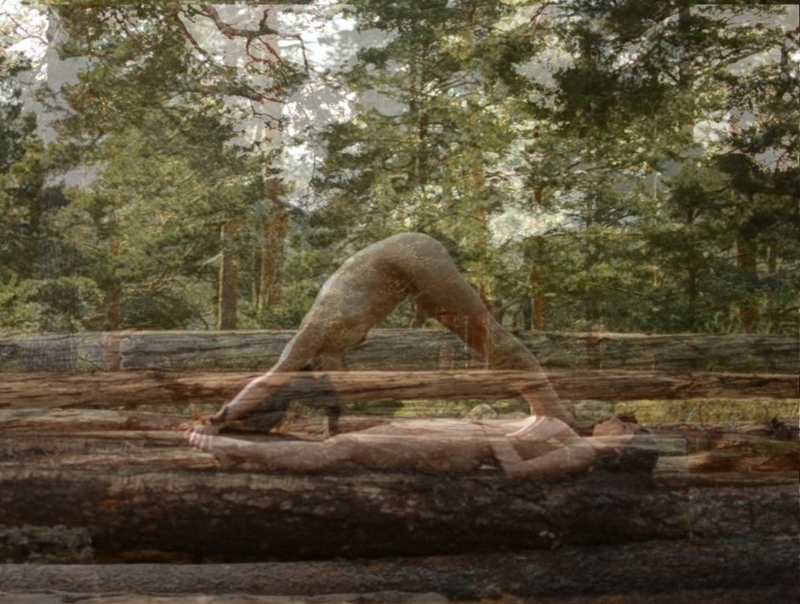
Nature often becomes an important part of your art. Do you feel a special bond to nature?
I think so. Lately more than ever I feel a very strong connection to nature, almost like a calling. The funny thing is that in my inner image it is not just any nature, but it has to do with the earth, with the land where I am from. And this land with which I feel connected to, is very extensive, it is part of the Andes and it reaches the Pacific Ocean. There is something magical about that place that simply cannot be described and lately, more than ever, it returns to my memory in a persistent way, therefore it constantly occupies my thoughts. I have not been back to Chile for more than two years and I miss that omnipresent landscape that I have searched for more here in Europe but have not been able to find. Although I have been in wonderful places, it is not the same. There is something special about that ground; it is as if it has its own life. That is what I miss and it incites me to return and of course to work with nature.
What do you like or dislike about being an artist?
What I like most is the freedom that allows you to be an artist in all aspects of your life including your own work, and what I like least is the uncertainty that is somehow the consequence of that freedom.
You are using quite different artistic tools in your works; do you have a favorite artistic practice you like to work with the most?
I like the one I master the least, best. I am always learning and introducing new techniques to my art. I am very motivated to learn and experiment with techniques, so the tool I am learning to master will always be my favourite.
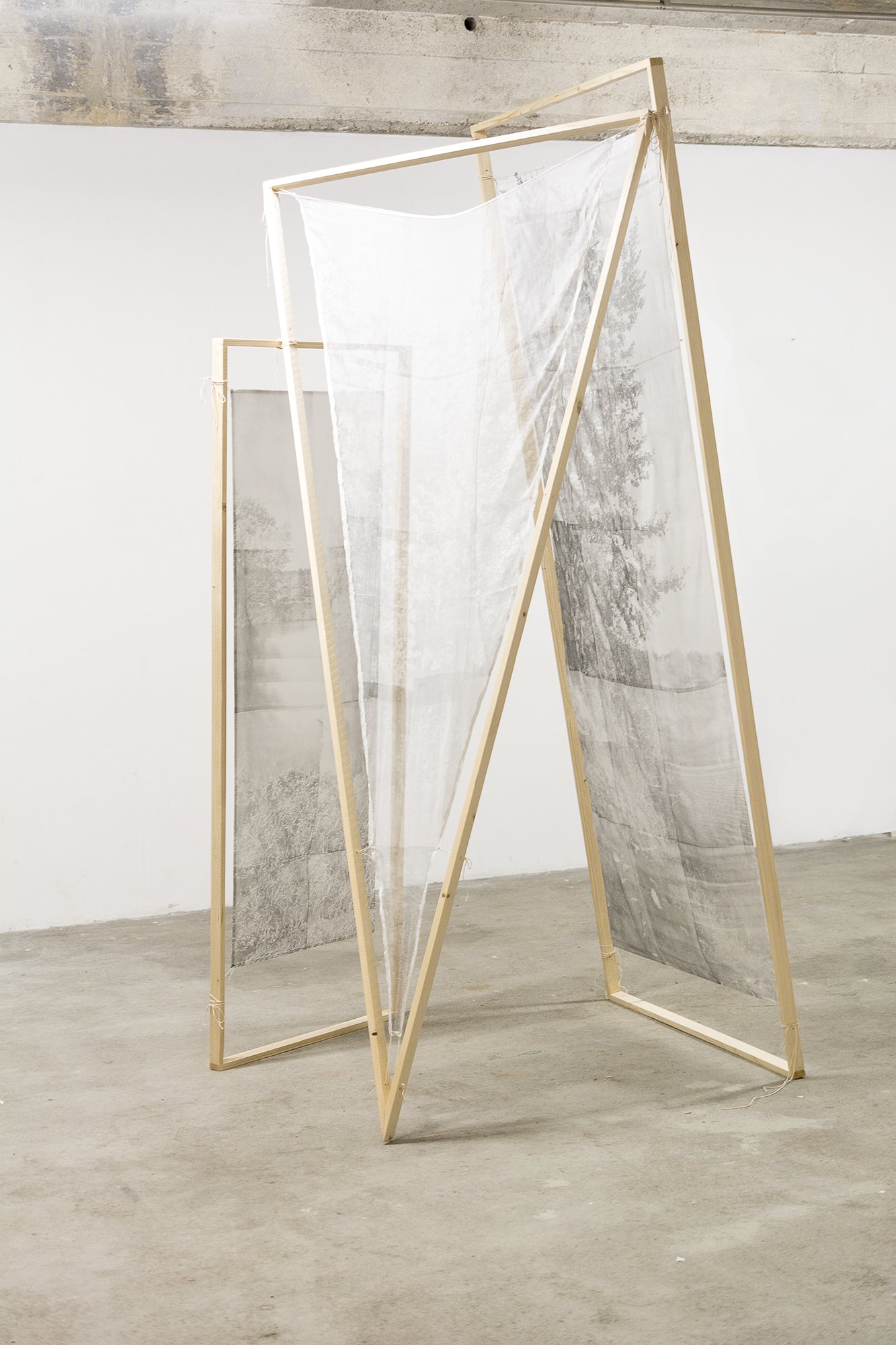
What are you working on at the moment?
I just finished the PILOTENKUECHE artist-in-residence program in Leipzig. For three months I was working on a project called "Dreaming the Forest". The project has to do with the relationship that I mentioned earlier with nature. I suppose for me, this project is a search for what my memory wants to show me but which I cannot see. That is why I feel it is a work of memory, an exercise in remembering nature and trying to make it present here, in the city. But thus far I have been focusing on one experience in particular, the experience of facing the tree. That gesture, the body makes when looking at the tree from the front and the eyes with the body follow its form, going on a journey until the sight escapes into the sky. That is when the colour of the leaves, the deep blue of the sky, the sensation of the wind, the sound of the forest, the smell of the earth, etc., comes to me. Clearly all this is not physically in the work. The work, the image is more like a dream, an anchor for whoever is faced with it to access those memories. We have all been in a forest at some point in our lives. The artwork is meant to connect with that. Physically, it is a sculptural and installation project. I work with black and white photographs printed on silk and framed on wooden structures. Also, one piece of the series is a video-performance that is projected on silk. I work with silk because I really like its texture and how lightweight it is. The result is light, fragile, delicate and soft with only little material pieces. My idea is to continue developing this project. Now I am travelling to Chile for two weeks and I would like to go into the natural reserves in the south, capture a lot of material to be able to continue working. I feel that this material will be more powerful and inspiring because it is the land of my memories.
.
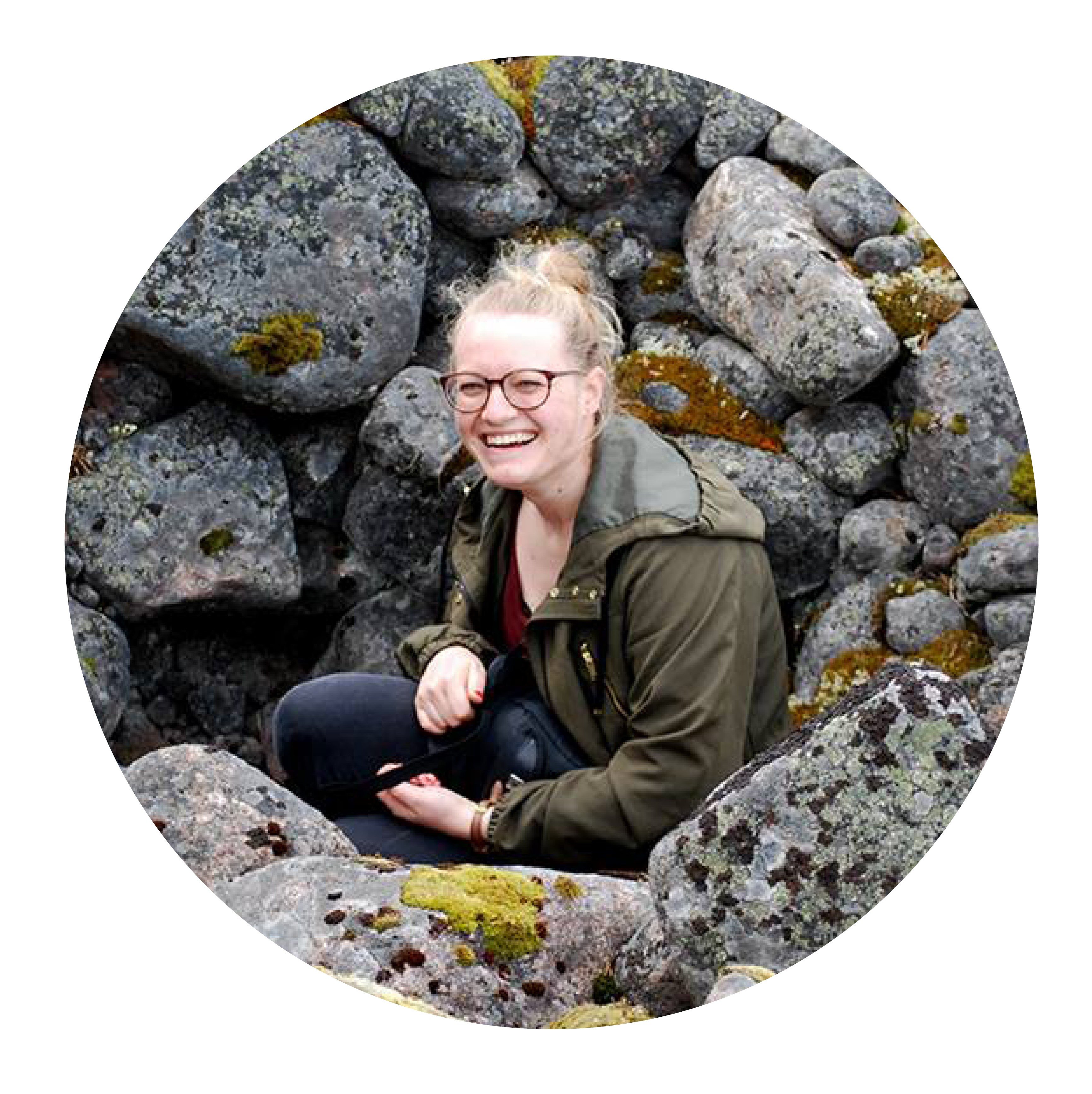
Interview by Valerie Wahlroos
Valerie Wahlroos studied communication design in Augsburg and completed her master's degree in Arctic Art and Design at the University of Lapland. She supported sculpture network for three months as Project Asistant.
